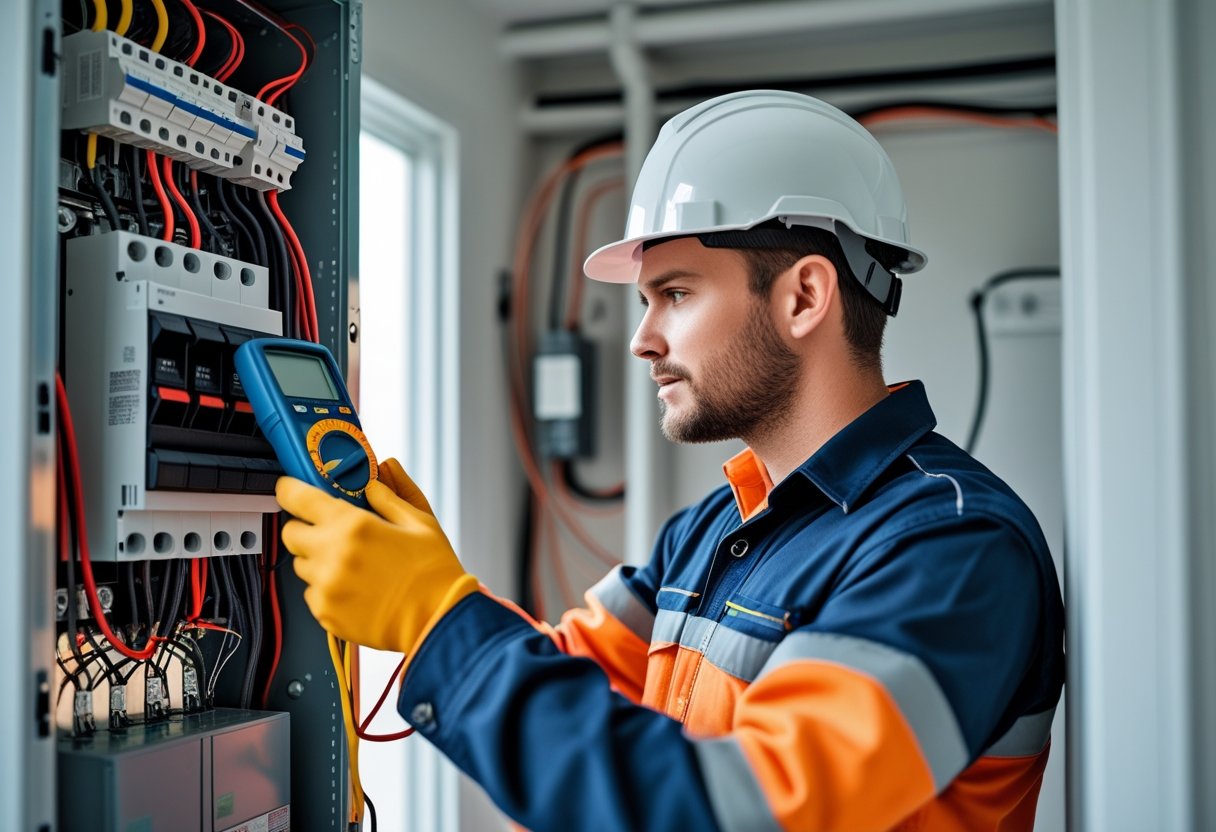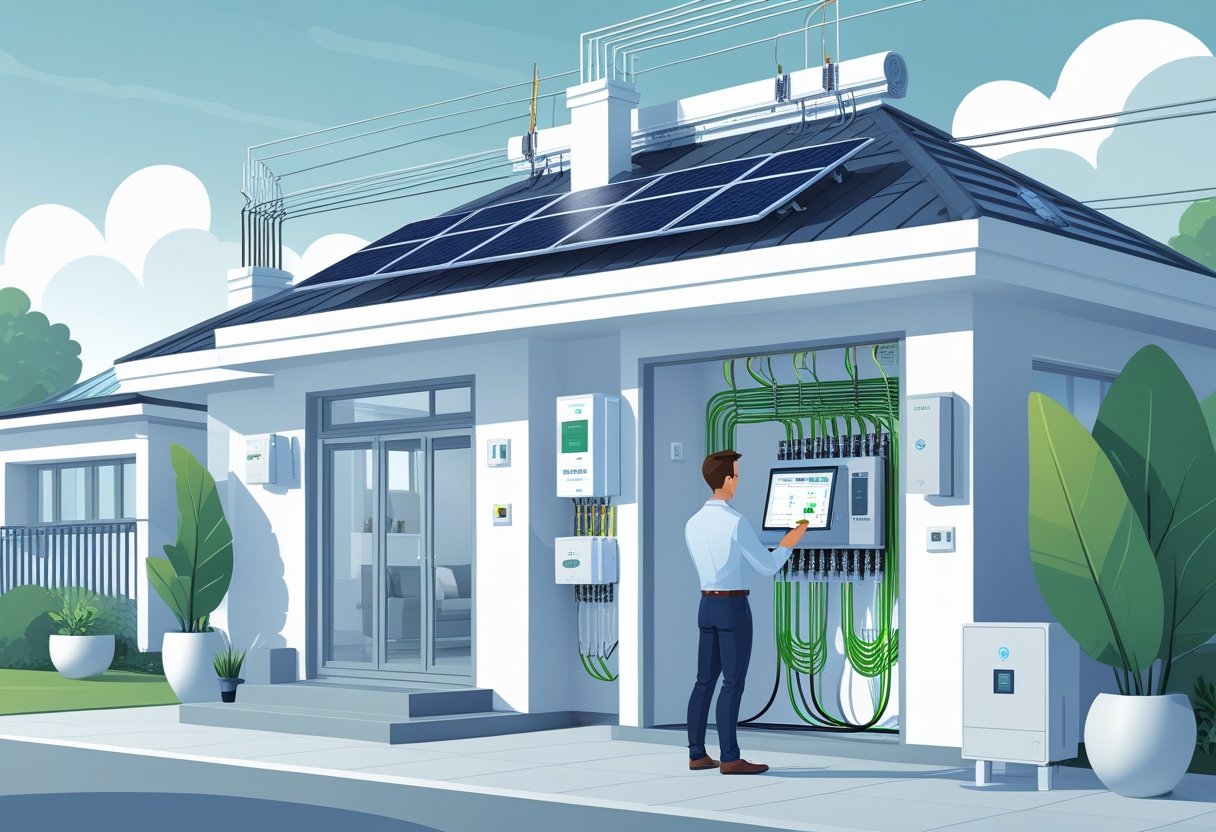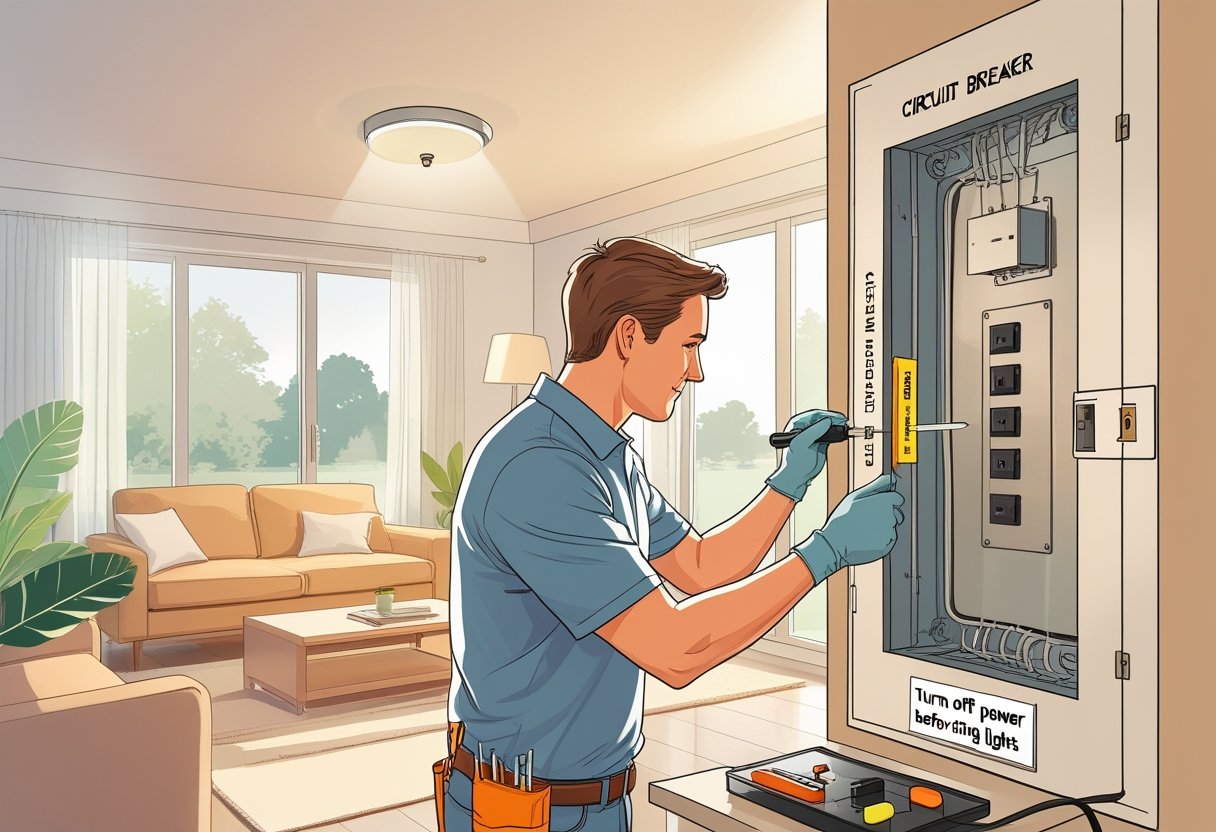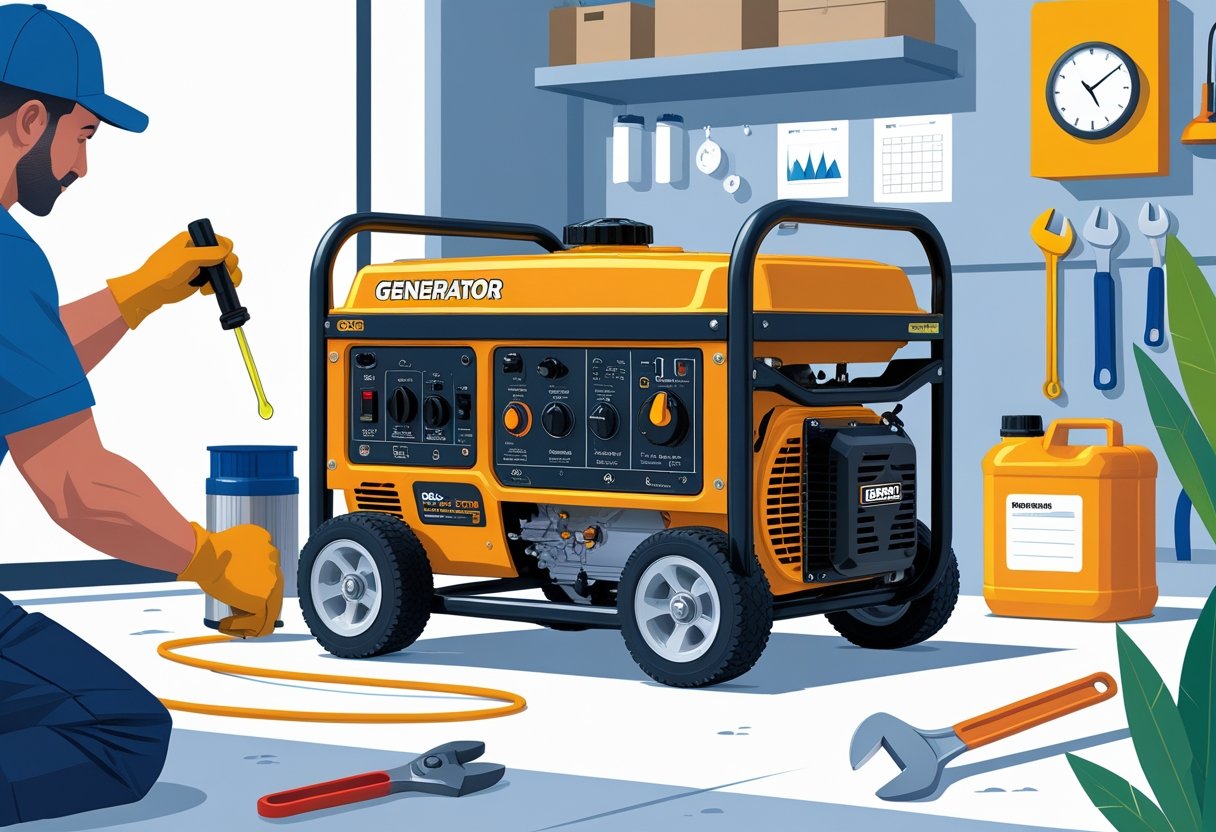When you schedule a home electrical inspection, you want to know what’s coming—after all, it’s your family’s safety and comfort on the line. A professional inspector checks your wiring, outlets, switches, and electrical panel for signs of wear, damage, or sketchy connections. They’ll test your breakers and make sure everything’s up to code, aiming to catch trouble before it turns into a headache.
If you’re around Sacramento—maybe Roseville, Elk Grove, or Folsom—AAA Electrical Services can send certified techs out the same day. They show up with stocked vans, flat-rate pricing, and a safety-first attitude. You might even see them fix a few things on the spot, so you’re not left hanging or hit with surprise costs.
Understanding what’s on the checklist helps the whole thing go smoother. You’ll watch pros work fast, and honestly, it’s a relief knowing your home’s in safe hands.
Purpose of a Home Electrical Inspection
A home electrical inspection is about spotting problems before they get serious. It’s a check for worn parts, safety risks, and making sure your setup is actually legal. Knowing when to call someone and who’s trustworthy makes the whole thing less of a hassle.
Why Electrical Inspections Are Important
Inspections keep your home safe, plain and simple. They look at wiring, outlets, switches, and panels for anything that’s frayed or not grounded right. Bad wiring or grounding can lead to fires or shocks—nobody wants that. Catching these issues early protects your family and your stuff.
They also make sure you’re not breaking any local safety rules. If you are, you might need repairs to avoid hazards or fines. Regular checks help you dodge sudden blackouts or that annoying breaker that keeps tripping.
AAA Electrical Services sticks to safety-first work with licensed professionals who really know their stuff in Sacramento and the nearby burbs.
When to Schedule an Inspection
Every 3 to 5 years is a good rule of thumb for inspections. If your house is older or you’ve noticed issues, maybe bump that up. You should also call for an inspection:
- When buying or selling
- After big renovations or electrical upgrades
- If you see flickering lights, dead outlets, or breaker weirdness
Getting ahead of problems saves money and stress. AAA Electrical Services offers same-day inspections with flat-rate pricing, so you’re not left guessing.
Who Conducts the Inspection
A licensed electrician handles your inspection. These folks have the training and certifications to test and check your system safely. They’ll look over wiring, grounding, breakers, switches, and outlets to make sure everything’s up to code.
With AAA Electrical Services, you get certified, background-checked, Nexstar-trained experts. They show up in uniform, leave your place clean, and usually have the parts to fix a lot of issues right away.
A pro inspection gives you a clear picture of your home’s condition, and you can actually trust the advice you get.
What Inspectors Look For
During a home electrical inspection, inspectors dig into the main parts of your electrical system to make sure it’s safe and running right. They’re on the lookout for damage, wear, or anything that breaks code.
Checking Wiring and Outlets
First up: wiring. Inspectors check for cracks, frayed wires, or anything that could spark a short or fire. Good wiring should be tucked safely inside walls or conduits.
Outlets and switches get a close look, too. Inspectors make sure they’re grounded, not damaged, and not loose. They’ll test voltage and check that GFCI (Ground Fault Circuit Interrupter) outlets are in kitchens and bathrooms—those wet spots where shocks are a real risk.
If you’ve got outdated or sketchy wiring, it’s a fire hazard. AAA Electrical Services can check it over and help you sleep easier.
Evaluating the Electrical Panel
The electrical panel is basically the heartbeat of your home’s system, so inspectors don’t mess around here. They look for burning, rust, or corrosion—signs the panel’s overloaded or just tired.
They check that wires are tight and the panel can handle your home’s needs. If the panel’s too small, breakers trip all the time; if it’s damaged, you’re asking for trouble.
If your panel is looking rough or ancient, it’s probably time to think about an upgrade. AAA Electrical Services does panel upgrades that keep your power reliable and your family safe.
Assessing Circuit Breakers
Circuit breakers are your first defense against overloads—they shut off power when something’s wrong. Inspectors test each breaker to make sure it flips like it should and hasn’t been tampered with.
They look for worn, rusty, or stubborn breakers that don’t trip. If a breaker’s not working, your risk of fire or fried appliances goes way up.
If you need a breaker swapped out, a pro can usually handle it on the spot. AAA Electrical Services rolls with stocked vans, so you’re not left waiting.
Safety Standards and Codes
Inspectors check your system against the rules—national guidelines and local laws. These codes keep your place safe and up to date. Knowing what’s required helps you get why some repairs or upgrades might be on the list.
National Electrical Code Requirements
The National Electrical Code (NEC) sets minimum safety rules for wiring, outlets, switches, and panels nationwide. Inspectors check for proper grounding, the right breaker sizes, and outlets in all the right places—especially near water.
GFCI outlets are a must in wet areas, and smoke or carbon monoxide alarms have to meet NEC standards. The NEC updates every few years, so inspections look for the latest version. Sticking to these rules helps prevent fires and shocks.
Common Local Regulations
Local codes add their own twists—maybe extra permits, special wiring rules near water, or panel size limits. Inspectors look for these local requirements along with the NEC.
In Sacramento and nearby, grounding and connection quality get a lot of attention. Some cities want extra inspections for big upgrades or panel swaps. Knowing the local rules keeps you from getting blindsided.
AAA Electrical Services follows all the codes, national and local, so you can relax knowing your home’s protected by people who care.
Inspection Process Explained
During an inspection, the electrician checks your electrical panel, tests circuits, and looks at outdoor stuff like outlets and lighting. Each step helps spot issues that could mess with your safety or cause problems down the road.
Initial Walkthrough
It starts with a walk-through. The inspector scans for obvious wear or damage—frayed wires, loose outlets, or sketchy DIY jobs.
They’ll focus on the electrical panel, checking breaker condition and grounding. This tells them if your system’s following the rules.
Catching the big stuff early makes the rest of the inspection smoother.
Testing Electrical Systems
Next, they test the system. Outlets and switches get checked to see if they work and are grounded. Sometimes they’ll use tools to measure voltage and double-check connections.
They test breakers to make sure they trip when they’re supposed to—critical for stopping fires or shocks.
AAA Electrical Services takes this part seriously, making sure your system meets all safety standards.
Reviewing Outdoor Electrical Components
Outdoor stuff isn’t ignored. Inspectors check exterior outlets, lights, and any wiring exposed to weather. They look for cracked covers, worn insulation, or anything installed wrong.
Outdoor GFCI outlets have to trip when needed—inspectors test these to be sure.
Keeping outdoor wiring in shape helps your whole system last longer and avoids pricey fixes later.
Typical Issues Identified
Inspections turn up some usual suspects—these problems can put your home at risk if you let them slide.
Outdated Wiring Materials
Older homes sometimes have aluminum or knob-and-tube wiring, which just isn’t up to today’s standards. These can overheat or start fires because they can’t handle modern loads.
Aluminum wiring, used before the ‘70s, cracks or corrodes, causing loose connections. Knob-and-tube lacks grounding and insulation—shock city.
If you’ve got outdated wiring, expect a recommendation to upgrade. AAA Electrical Services can swap it out for safer stuff.
Improper Installation
Bad installs—like reversed polarity, loose connections, or sloppy wire splicing—can cause shorts or fires. Inspectors look for missing grounds or wrong breaker sizes, often left behind by rushed repairs or DIY experiments gone wrong.
If they find issues, it’s smart to let a pro fix them. AAA Electrical Services can usually handle these fixes same-day, with licensed techs who know what they’re doing.
Overloaded Circuits
Too many devices on one circuit? That overloads things, trips breakers, and can overheat wires. Watch for flickering lights, frequent breaker trips, or warm outlets.
Old panels sometimes just can’t keep up. The inspection checks your load and panel condition.
Upgrading or spreading out circuits usually solves it. AAA’s techs often have what they need to get it done in one visit.
Faulty Grounding
Good grounding keeps extra electricity from zapping you or your appliances. Bad grounding can mean shocks or fried gear during surges.
Inspectors check grounding wires on outlets, panels, and appliances. Missing or broken grounds are a big red flag.
AAA Electrical Services sorts out grounding problems fast, keeping homes in Sacramento and nearby safe.
Preparing Your Home for Inspection
Getting ready for an inspection mostly means making things easy for the inspector and keeping things safe.
Clearing Access to Electrical Panels
Clear a path to your electrical panel—move boxes, furniture, or whatever’s in the way. Inspectors need about three feet of space to work safely and see what’s going on.
Good lighting helps, too. If the panel’s in a locked spot, unlock it ahead of time.
A clear area makes things quicker and safer for everyone.
Documenting Prior Electrical Work
If you’ve got paperwork from past electrical work—permits, invoices, or receipts—gather it up. It shows the inspector what’s been done and that it was probably up to code.
No paperwork? No worries—just try to remember what was done and when. Sharing this info helps the inspection go smoother and builds a little trust.
Tips for Homeowners
Go ahead and test your smoke and carbon monoxide detectors before the inspection. If the batteries are low, swap them out so you’re not caught off guard.
Flip on all your lights, switches, and outlets before the inspector arrives. It’s a simple way to help them spot any issues fast.
If you’ve noticed flickering lights, tripped breakers, or outlets that just don’t work, jot those down. Bring them up during the inspection—it saves everyone time.
AAA Electrical Services does same-day inspections with licensed pros who actually respect your space. Clearing paths and having your info handy just makes the whole thing smoother.
What Happens After the Inspection
After your home’s electrical inspection, you’ll go through a few important steps to really understand your system’s condition. You’ll get a detailed report, explanations about what the findings mean, and advice on what to do next.
Receiving the Inspection Report
Once the inspection wraps up, you’ll get a written report. It lists everything the inspector checked—wiring, outlets, switches, breakers, and your electrical panel.
The report points out any problems like outdated wiring, bad grounding, or issues with breakers. It’ll also mention what passed with no trouble.
Look for anything marked urgent or recommended repairs. Those need your attention now or sometime soon. Keep the report handy; it’s basically your electrical cheat sheet.
Understanding the Findings
You might see some technical language in the report, but the main points are about safety and whether your system meets code. You’ll find out if your wiring and setup follow local and national standards.
If there’s wear or damage, the report spells out how serious it is—like missing grounding or faulty outlets that could cause shocks or fires. Knowing this helps you decide what to fix first.
Don’t hesitate to ask the inspector or AAA Electrical Services for a plain-English explanation. Their team’s used to breaking things down, so you’re not left in the dark.
Recommended Next Steps
Depending on the results, you might need to repair or replace wiring, upgrade your electrical panel, or add grounding equipment.
AAA Electrical Services usually handles repairs on the spot—their vans are loaded with parts, so you’re not waiting days for a fix. Booking repairs quickly is smart; it keeps things safe and stops little problems from getting worse.
If everything checks out, think about regular maintenance every few years or before you tackle big upgrades. Sticking to the plan keeps your system running safely and smoothly for the long haul.
Benefits of Regular Electrical Inspections
Regular inspections really do make a difference. By checking your system every 3 to 5 years, you catch small problems before they become expensive headaches or, worse, safety hazards.
Inspections catch worn wiring, bad outlets, and sketchy connections. They make sure your panel and breakers are up to the job, lowering your risk of electrical fires or sudden outages.
With AAA Electrical Services, you get same-day service from licensed folks who treat your home with actual care. Their vans are packed with parts, so most fixes happen right then and there—no endless waiting.
Key benefits include:
- Better safety for your family and home
- Avoiding those emergency repair bills
- Peace of mind that your system meets code
- Catching old or damaged equipment early
If you’ve just renovated or something seems off, booking an inspection is a no-brainer. Protect your home and loved ones with a team that’s been serving Sacramento for over 42 years.
Everyone deserves honest, safety-first electrical work—no hidden fees, no nonsense.
Choosing a Qualified Electrical Inspector
Picking the right inspector really matters. You want a licensed and insured pro who knows the local codes backward and forward. That’s the only way to make sure the inspection’s done right.
Check out reviews or ask for references—see what other homeowners say. Good communication is key. Your inspector should break things down in simple terms and give you straightforward pricing. Surprises are never fun.
A thorough inspector uses a checklist to cover wiring, outlets, switches, and your panel. They look for damage, wear, and make sure grounding is solid. This helps you avoid costly or dangerous problems down the line.
If you’re near Sacramento, AAA Electrical Services is worth a look. They offer same-day service with certified techs who actually care about your home. Their vans are stocked, so lots of issues get fixed on the first visit.
You’ll also know their team puts family safety first. Whether it’s a panel check or an EV charger install, they focus on quality and honesty. Go with a local expert you can trust to keep your home safe.
Frequently Asked Questions
Knowing what gets checked, how long it’ll take, and how to get ready makes the inspection go way smoother. A bit of basic knowledge about wiring and outlets helps too.
How can I prepare my home for an electrical inspection?
Clear out the area around your panel, outlets, and switches. Less clutter means the inspector can actually see what they need to.
Try to make sure all your lights and outlets are working before the visit. Only turn off the power if the pro tells you to.
What are the common things checked during an electrical inspection?
Inspectors check wiring, grounding, and how well breakers work. They also look at outlets, switches, and the panel for damage or code issues.
They keep an eye out for old parts or breakers that trip too much. Faulty wiring or missing safety devices pop up a lot.
How long is the electrical inspection process expected to take?
Most inspections take about one to two hours. It depends on your home’s size and how your system’s looking.
If you’ve had recent updates or repairs, expect the inspector to spend a bit more time on those areas.
Can you explain what a rough-in inspection entails?
A rough-in inspection happens before the walls get closed up. The inspector checks if wires are installed right and if the boxes for outlets and switches are in the right spots.
This step makes sure you’re set to pass code before drywall or finishes go on.
What are the typical requirements to pass an electrical inspection?
Your system needs to follow local safety codes, like having grounded outlets and working breakers. Wires should be connected and insulated properly.
The panel has to be free of corrosion or obvious wear. Everything needs to be safe to cut down on fire or shock risks.
Should wires be left exposed or connected for an electrical inspection?
You’ll want to make sure wires are connected and properly terminated in outlets, switches, or the panel. Leaving wires exposed isn’t just risky—it’s usually only acceptable during a rough-in check, and even then, you’ve got to be careful.
If you’re still working on things, keep any exposed wiring safe and easy for the inspector to see.
AAA Electrical Services offers same-day service around Sacramento, aiming to keep your family safe with honest, flat-rate inspections that actually fit your schedule.





